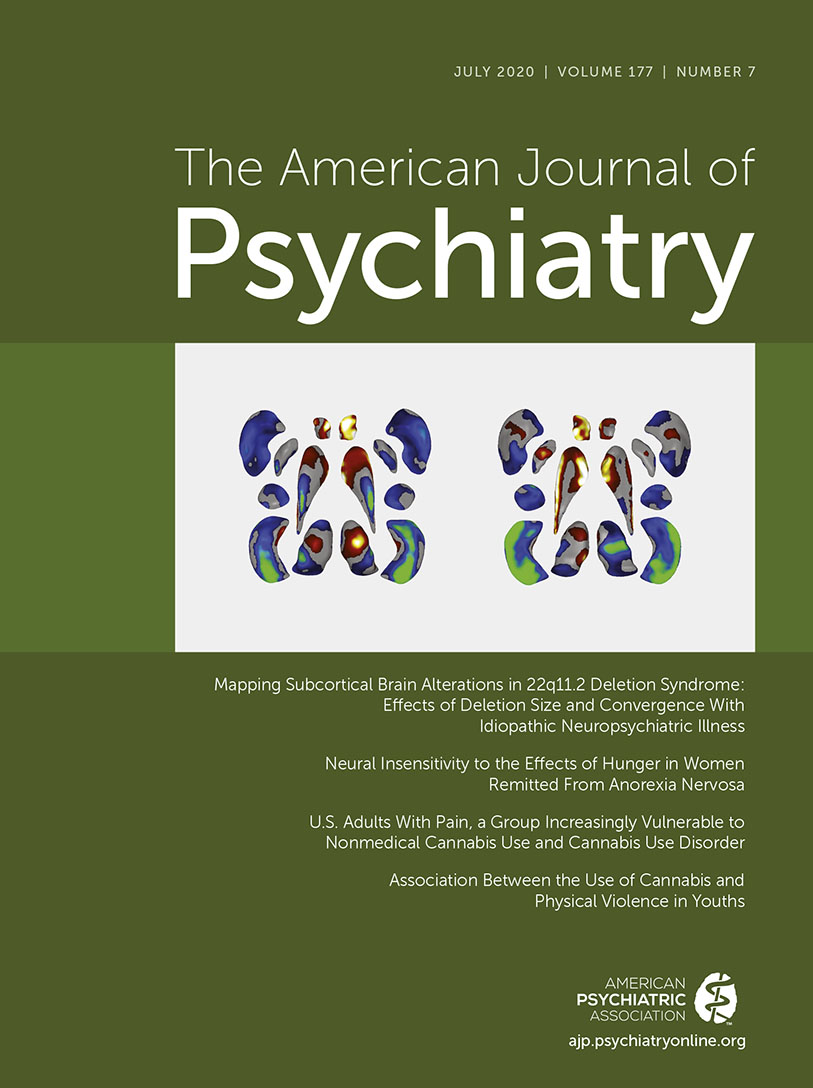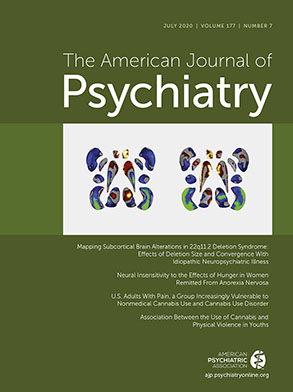T
o the E
ditor: We read with interest the letter from Rasetti et al. and thank them for further discussing the potential implications of the results of our meta-analysis. The first part of their letter raised concerns about the concept of neutral stimuli in an MRI environment. Although we understand their comment, we would like to reiterate that the rationale of our meta-analysis was based on a legitimate question that was raised initially by Anticevic and colleagues (
1). In that article, the investigators performed a meta-analysis of functional neuroimaging studies on emotion processing in schizophrenia that focused on the amygdala as a region of interest. In studies using the “negative emotion minus neutral” contrast, they found that amygdala activity was reduced in schizophrenia and that there were no between-group differences in studies examining the “negative emotion” condition only. Indirectly, these results raised the possibility that the reduced activations observed in schizophrenia using traditional contrasts (e.g., negative minus neutral) may actually be driven by significant differences during what the authors reported to be the “neutral condition.” Unfortunately, at the time, the data were not available to directly test this assumption. Since then, several studies have been published that allowed our research team to test and support the untested assumption of Anticevic and colleagues. Indeed, 23 functional neuroimaging studies on emotion processing were identified and analyzed, and these showed that there are increased activations in limbic regions (e.g., amygdala, hippocampus, insula) in schizophrenia during the neutral control condition (compared with an at-rest condition or baseline). In their critique, Rasetti and colleagues argued that our results may simply be explained by different levels of exposure to the MRI environment among schizophrenia patients and healthy control subjects and by the discomfort experienced by patients in the scanner. However, this possibility seems unlikely to explain our results. The main empirical reason is that several experimental studies using emotion induction paradigms (e.g., affective pictures and faces, film clips) have been performed in patients with schizophrenia on emotion processing outside the scanner, and these have shown results in line with the results observed inside the MRI machine. That is, patients report greater levels of aversion and arousal than control subjects in response to stimuli validated as being emotionally neutral. This finding has been demonstrated by two meta-analyses (
2,
3). That said, we agree with Rasetti and colleagues that the increased limbic activity observed in schizophrenia during the processing of neutral stimuli needs to be better explained (as long as the phenomenon is replicated). Precisely because of that, we mentioned in the Discussion section of our article that (at least) two options proposed by other investigators deserve further investigation using proper experimental paradigms. A first possibility is that neutral stimuli may acquire aberrant emotional significance in schizophrenia as the result of abnormal associative learning (
4). Another option has to do with the spontaneous social judgments people make when watching nonemotional faces (about their attractiveness, trustworthiness, etc.) (
5), and this perception may be impaired in schizophrenia (
6).
In the second part of their letter, Rasetti and colleagues reported that we omitted key neuroimaging investigations on emotion processing performed in individuals at risk for psychosis. Here it is important to clarify that psychosis risk was not part of the meta-analysis. The main focus was to review neuroimaging studies on emotion processing in schizophrenia, having examined the control condition (e.g., neutral stimuli) specifically. Psychosis risk was evoked only in the Discussion section, and we acknowledged that the studies examining the control condition have produced mixed results thus far (
7–
9). As for the functional neuroimaging studies using traditional contrasts (e.g., negative emotion minus neutral), which were not reviewed in the article, our understanding of the literature is that results also have been mixed. While some studies have shown significant neurobiological differences between individuals at risk for psychosis and control subjects (
10–
12), other studies, such as the important ones described by Rasetti and colleagues (
13,
14), have not found differences. Finally, we would like to reiterate that regardless of the contrast used for the neuroimaging analyses, the comparison of results across studies has not been facilitated owing to the fact that the definitions of psychosis risk vary considerably from one study to another (e.g., psychotic experiences compared with at-risk mental state, first-degree relatives, polygenic risk score, etc.).
In sum, our meta-analysis sought to answer a scientifically valid question first raised by Anticevic and colleagues. We found increased activations of limbic regions during the processing of nonemotional stimuli in schizophrenia. Such results may encourage investigators to prudently interpret some of the results based on the contrast between emotional and neutral stimuli when investigating emotion processing in schizophrenia, and to pursue functional MRI studies on emotional disturbances in schizophrenia using more complex experimental paradigms and analytical strategies. As for psychosis risk, we agree that results have been mixed thus far.

